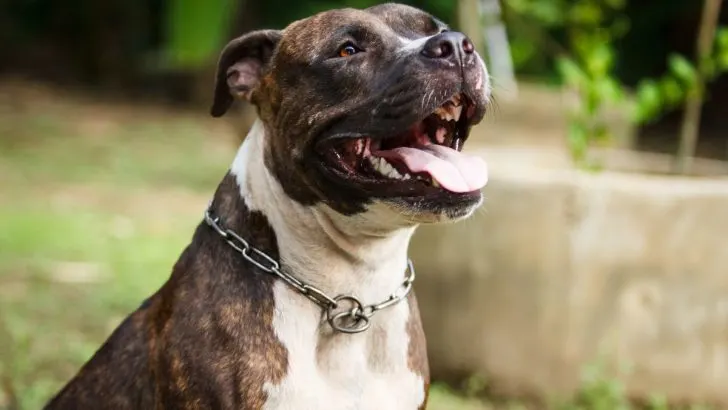Are you looking to buy a new doggie, but cannot decide on the shade? Or you are so used to seeing various Pitbull colors on the streets that now you want to check for yourself how many hues are there. This article is for you.
Pitbull is an umbrella term used for five dog breeds:
- American Staffordshire Terrier
- American Pit Bull Terrier
- Staffordshire Bull Terrier
- American Bulldog
- American Bully
While all are equally colorful, most pictures today will focus on the first two dog breeds listed.
Also, it’s important to note that the American Kennel Club (AKC) doesn’t recognize either Pitbull breed. This means that, if you live in the United States, no color can technically be considered recognized.
However, the United Kennel Club recognizes these dogs and states that all Pitbull colors are recognized and accepted, with the exception of the Merle pattern.
Without further ado, here are all the different colors and patterns these magnificent dogs can come in:
1. Black Pitbull
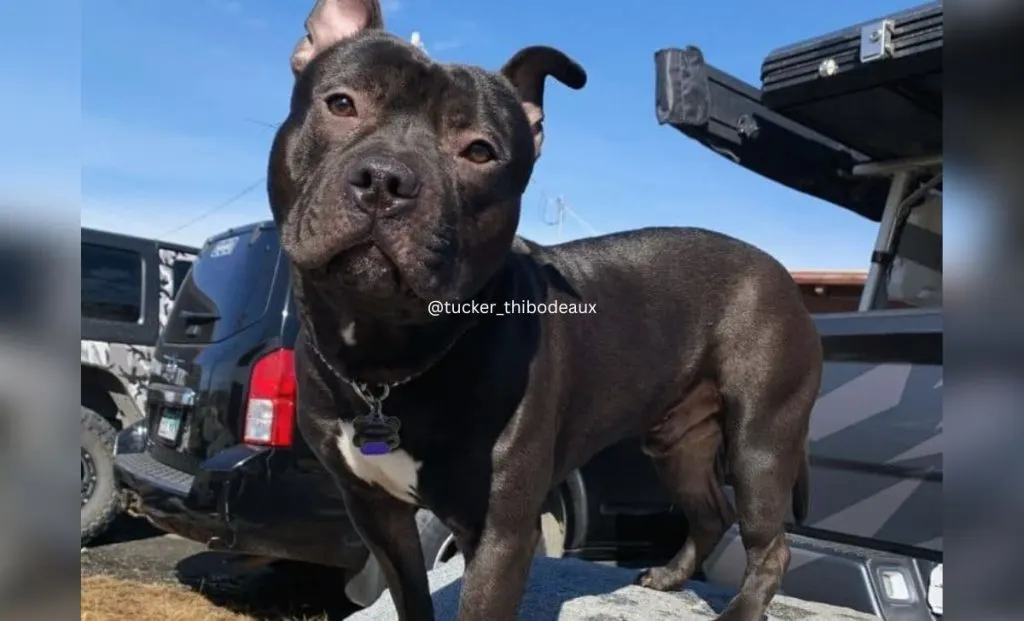
Solid black is one of the rarest colors in all dog breeds, but it is possible in Pitbulls. It is caused by eumelanin, which is the name used for the black pigment.
These dogs are entirely black, including their noses, eye lids, and mouth rims. Also, there eyes are dark brown, although lighter shades are possible.
2. Black And White Pitbull
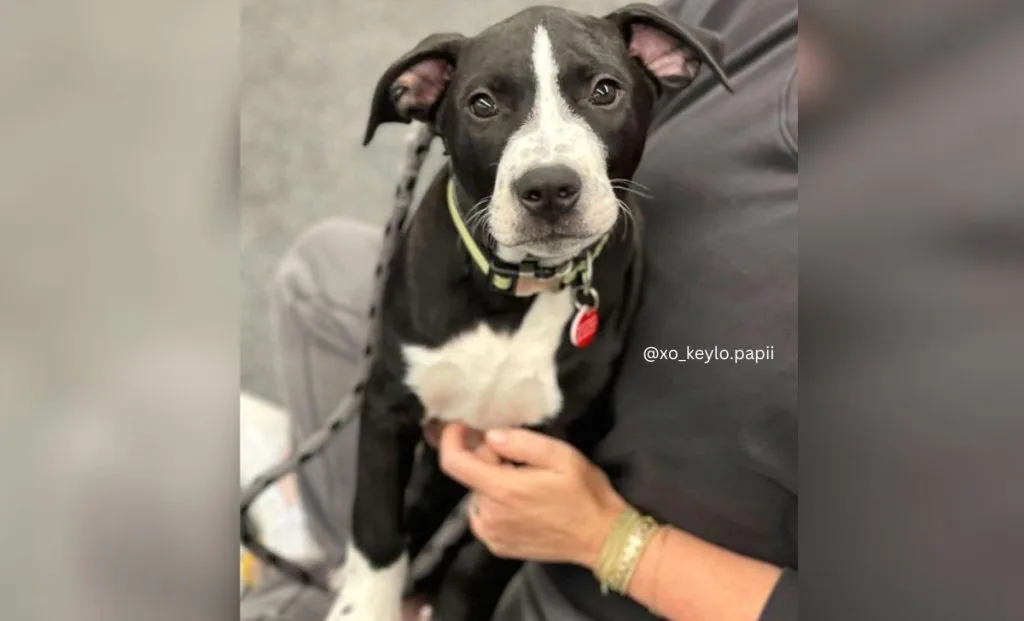
Black and white Pitbulls are black dogs with white markings. Common patterns include white chest, stomach, and paws, as well as a white mask. However, any other pattern is acceptable.
The only condition is that the white markings don’t take more than 49% of a dog’s body. If this happens, we are no longer talking about black and white, but spotted Pitties.
3. Black And Tan Pitbull

Black and tan Pitties are dogs with a black base coat and tan markings. When compared to black and white Pitbulls, these markings will typically take less of the dog’s body, and they’ll almost always cover the dog’s stomach, chest, and paws. A tan mask is also possible.
Occasionally, these dogs will have the so-called Doberman markings, known for being a signature Doberman color.
4. Black Brindle Pitbull

Do you know those dogs with tiger-like stripes on their bodies? This is called the brindle pattern, and it can be seen in most coat colors.
In the case of black brindle Pitties, you might confuse these dogs with solid black Pitbulls. However, at a closer look, you’ll see that their bodies are covered in dark brown stripes.
5. Red Pitbull
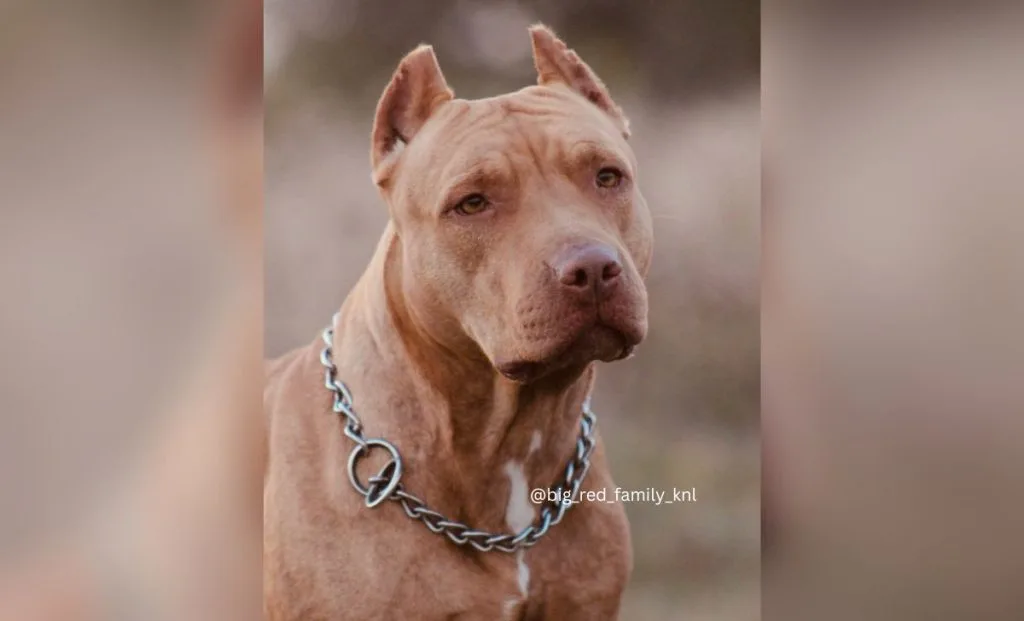
Unlike black, red color is caused by phaeomelanin, a pigment responsible for yellow and red coloring. These dogs can vary in shade from ginger to a deep chestnut color.
Solid red is rare to find in this breed, but you might still stumble upon these pups.
It’s important to note that red Pitbulls are not the same as red nose Pitbulls. Red nose Pitbulls are dogs with a dilution gene that has turned the black pigment into a reddish-brown shade.
They can come in many various colors (except black and blue), and a common physical feature is that all will have a red nose.
Some red Pitbulls are red nose Pitbulls. Others will have a standard black nose and dark brown eyes.
6. Red And White Pitbull
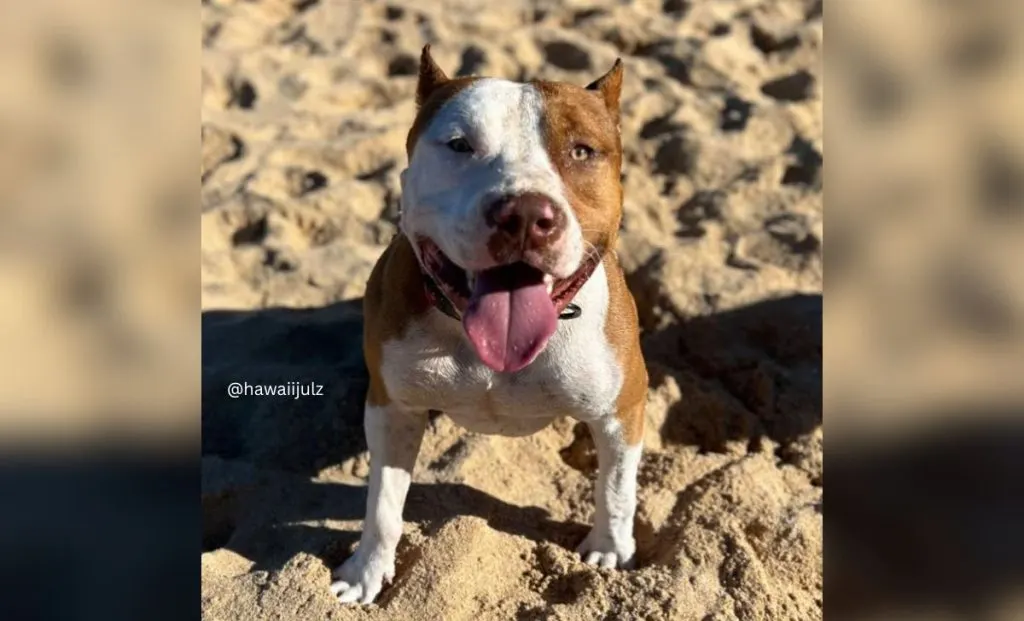
Most red Pitbulls have some white markings that are similar to markings in black Pitbulls. These dogs can also be regular or red nose Pitbulls – although if you see a red and white Pitbull with a red nose, chances are he is liver or brown instead.
7. Red And Tan Pitbull
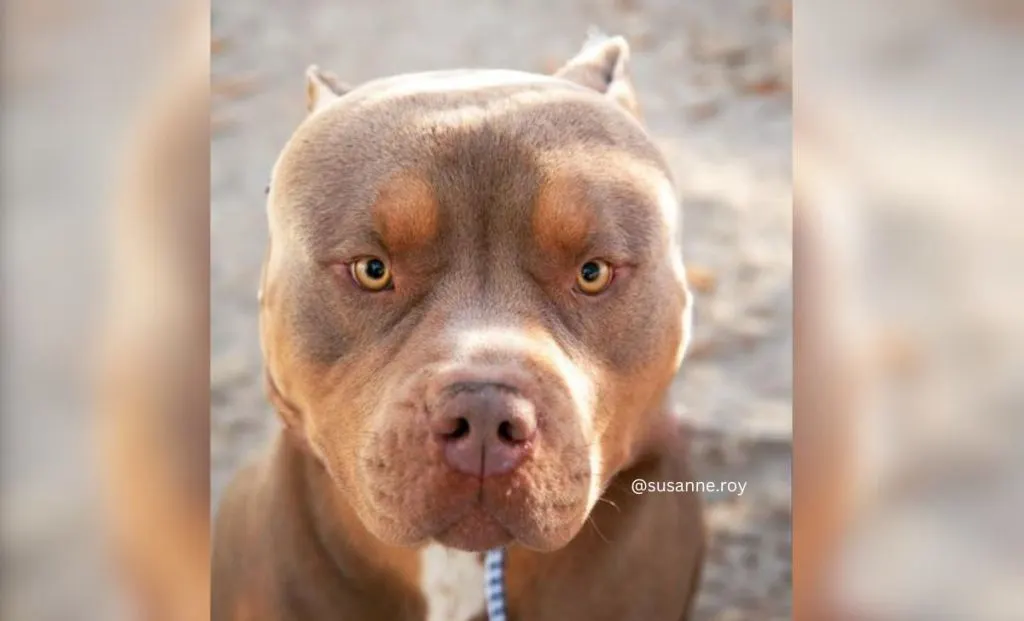
Red and tan Pitties are pretty rare, and they often seem solid-colored as the two shades are so similar. Once you notice the markings, however, they become one of the most beautiful Pitbull colors you can find.
8. Red Brindle Pitbull

Red brindle Pitbulls are dogs with a red base coat and black stripes.
Red brindle is not possible with red nose Pitbulls, as the dilution gene would neutralize the black brindle markings.
9. Red Sable Pitbull
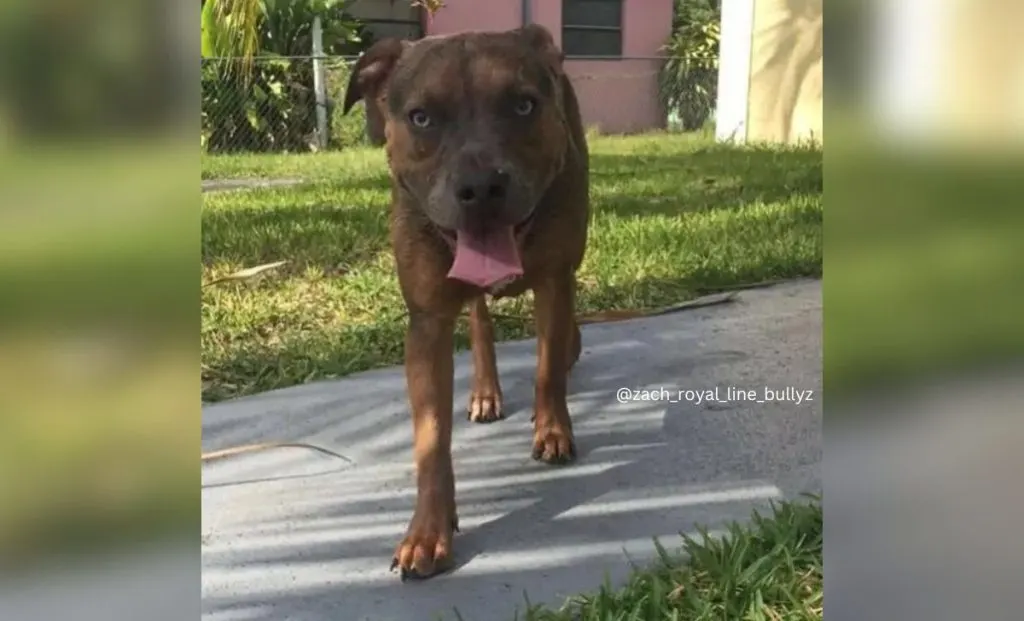
Sable is a unique color in which the tip of a dog’s hair is black. This gives the dog the appearance of a dark overlay.
As you might’ve guessed, red sable Pitbulls have a red base color with darker tips.
Just as is the case with red brindle Pitties, these dogs cannot be red-nosed.
10. Bronze Pitbull
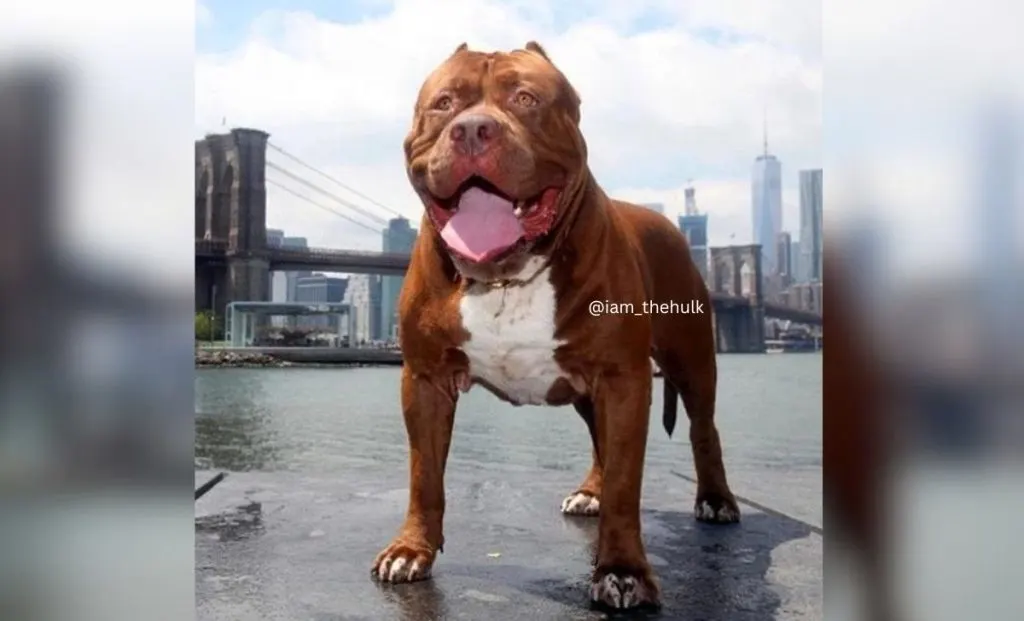
Bronze Pitbulls are red nose Pitbulls similar to standard red Pitties, but their coat has more shine and a brighter shade.
Just like red Pitties, these pups can have tan or white markings – or both!
11. Brown Pitbull

Brown Pitbulls are, essentially, red nose Pitbulls that come in a brown color.
They typically have a lighter eye color than red Pitbulls. Some might even have green eyes! Isn’t it beautiful?
12. Brown And White Pitbull
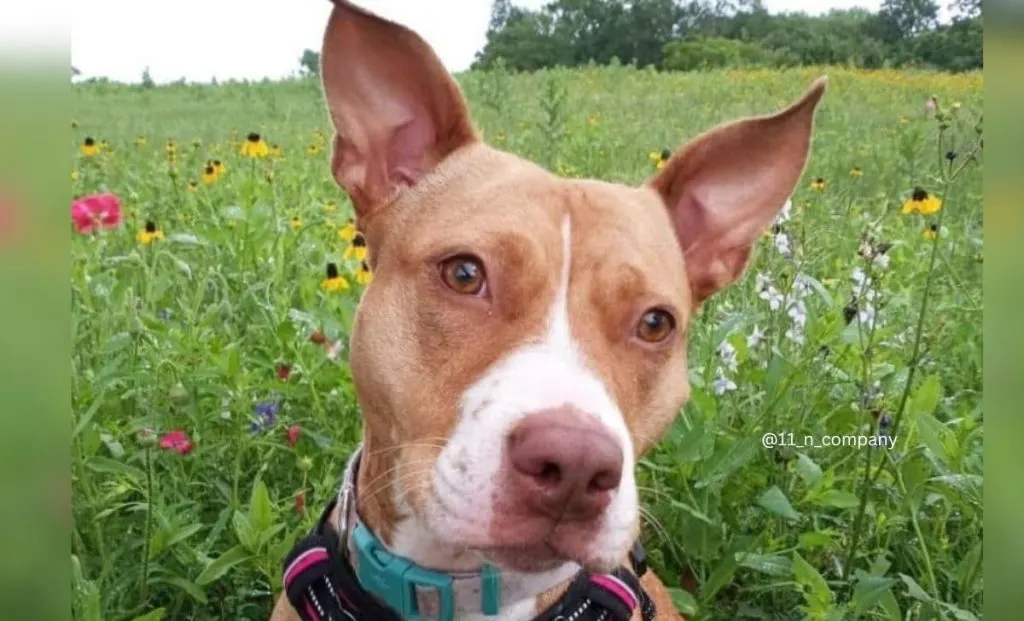
Brown and white Pitbulls are red nose brown Pitbulls with white markings on their bodies.
Just like in other coat colors, the white spots should take less than half of a dog’s body.
13. Liver Pitbull

Liver Pitbulls are yet another variation of red nose Pitbulls that come in a unique liver shade.
These pups have deep red coats, brown noses, and hazel eyes.
They are the result of a dilution gene that has turned the black pigment into this adorable color.
14. Liver And White Pitbull

You’ve guessed it right! Liver and white Pitbulls are liver Pitties with white markings. This is a really sought-after combination, and these pups can be extremely expensive.
15. Blue Pitbull
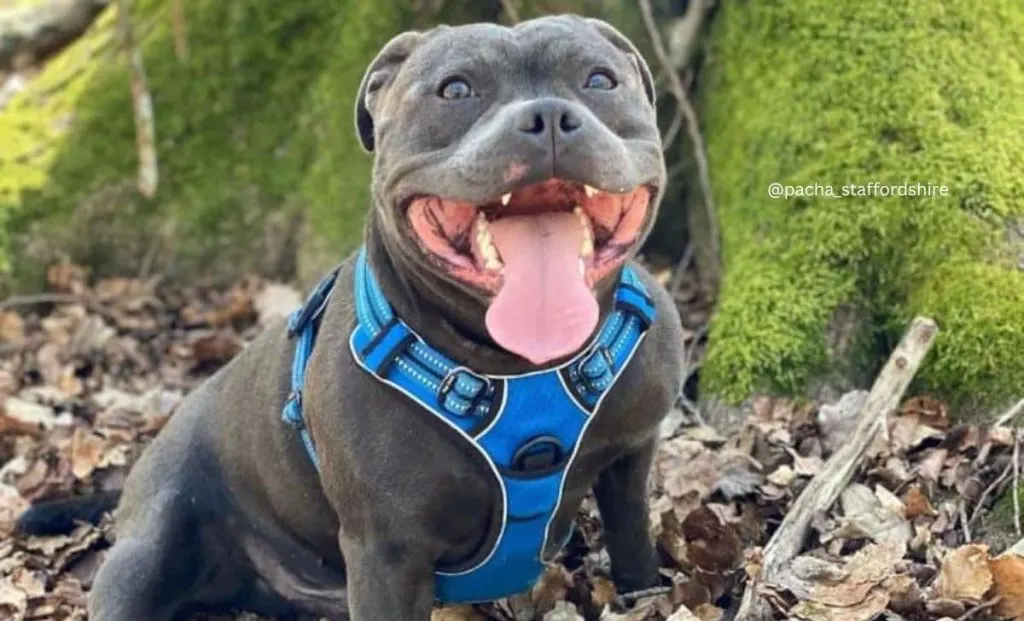
Blue Pitbulls are even rarer than the black Pitbulls! This is because their color is a product of a dilution gene that has turned the black pigment into a blue hue.
The coat color of these pups can vary from silver to deep blueish-gray.
Just as is the case with red nose Pitties, the term blue Pitbull can often be confused with blue nose Pitbulls. However, not all blue nose Pitbulls have a blue coat.
The blue dilution gene affects all of the black pigment in a dog’s body. If the only place where your dog was black was its nose, the coat color will remain unaffected.
It’s important to note that the blue dilution gene is connected with a rare genetic condition known as color dilution alopecia (CDA). CDA is one of the main reasons why your American Bully might be losing hair.
16. Blue And White Pitbull
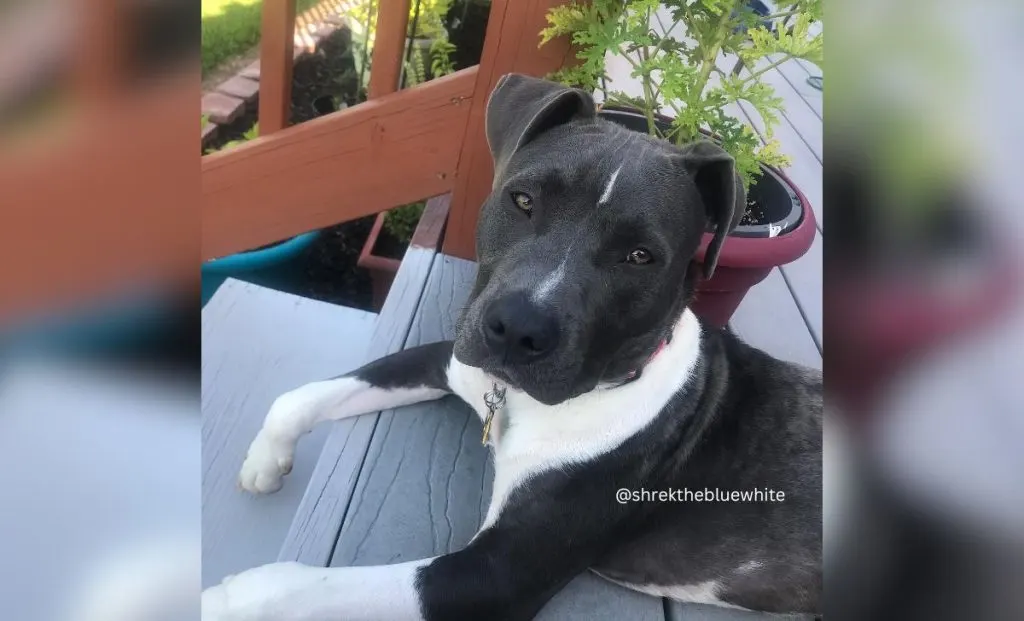
Blue and white is one of the most common color combinations in American Bullies, but it is also often seen in other Pitbull breeds.
17. Blue And Tan Pitbull

The markings on blue and tan Pitbulls are often overlooked at first glance, as there is almost no contrast between the two colors.
18. Blue Brindle Pitbull

Most blue brindle Pitbulls will have a brown to gold base coat color with blue stripes. They are, essentially, red brindle Pitbulls affected by the dilution gene that has turned black stripes to blue.
19. Blue Fawn Brindle Pitbull
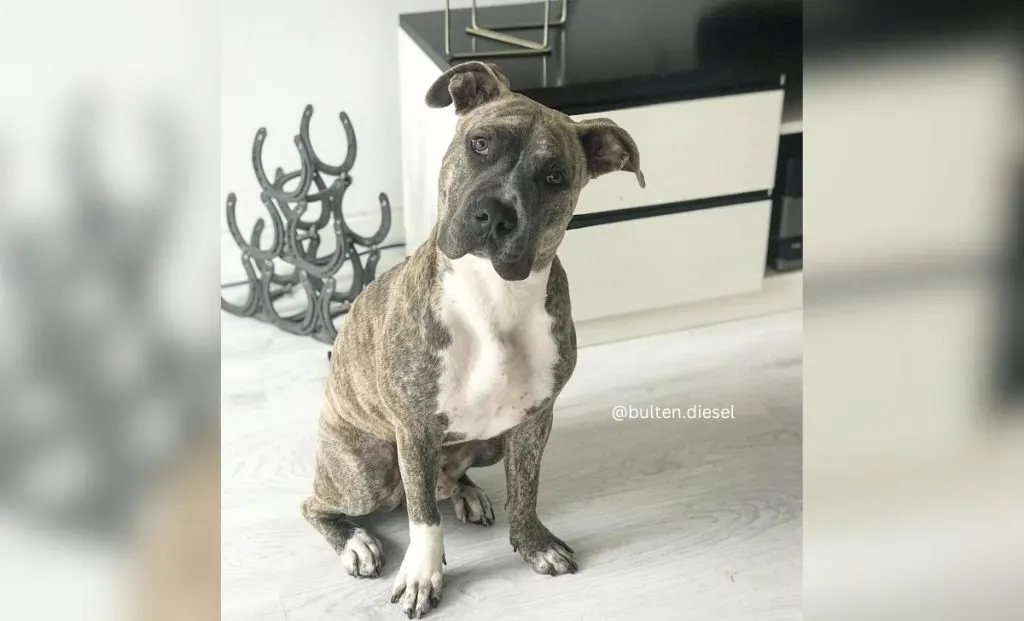
Blue fawn brindle Pitbulls are reversed blue brindle Pitties. They have a blue base coat with fawn or tan stripes on them.
This is because they are black brindle Pitbulls whose base coat was changed by the blue dilution gene.
20. Fawn Pitbull
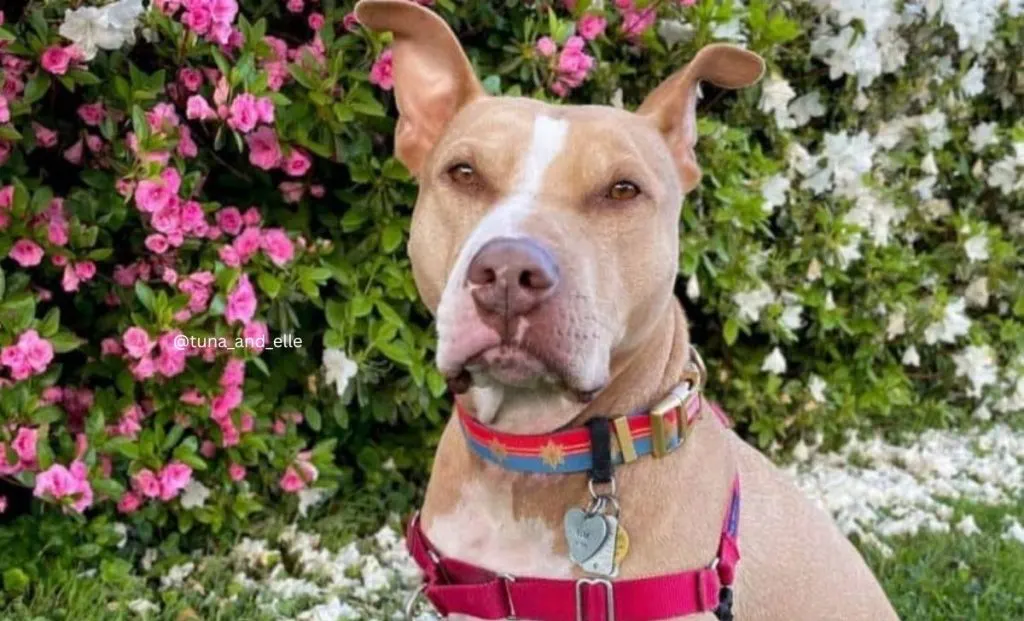
Fawn Pitbulls have a light gold to cream shade. Some are even the color of the sand.
Most fawn Pitties have a black nose, although it is possible for them to be red nose and blue nose Pitbulls, as well.
Black masks are pretty common, as well as black paws.
21. Fawn And White Pitbull
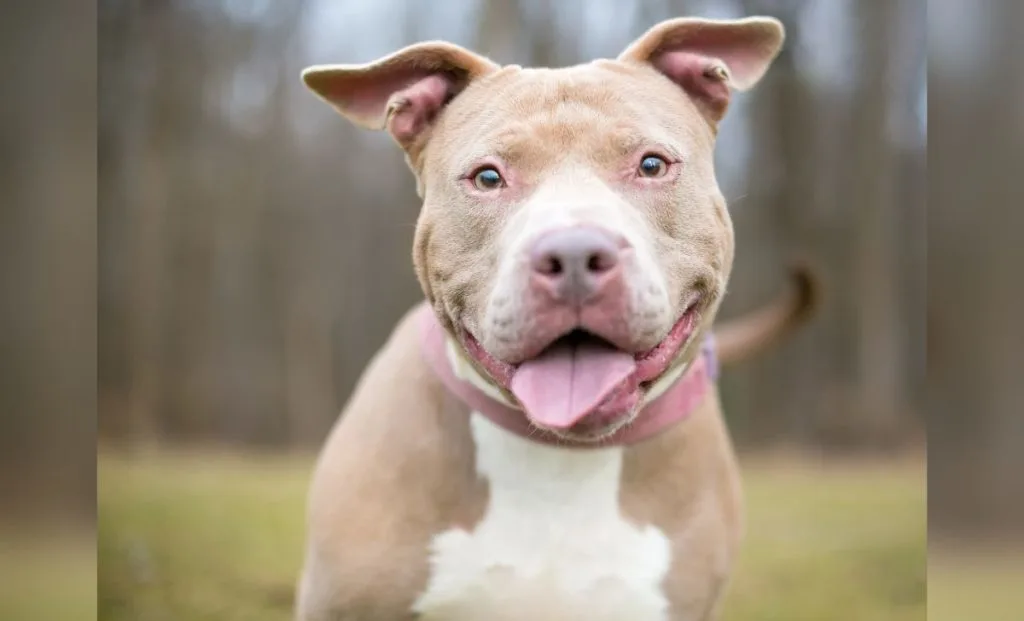
Fawn and white Pitbulls are pretty common. These are fawn-colored dogs with white patterns. Black mask is also possible, as long as the dog isn’t blue or red-nosed.
According to many owners and dog lovers alike, this is one of the most beautiful Pitbull colors.
22. Fawn Sable Pitbull
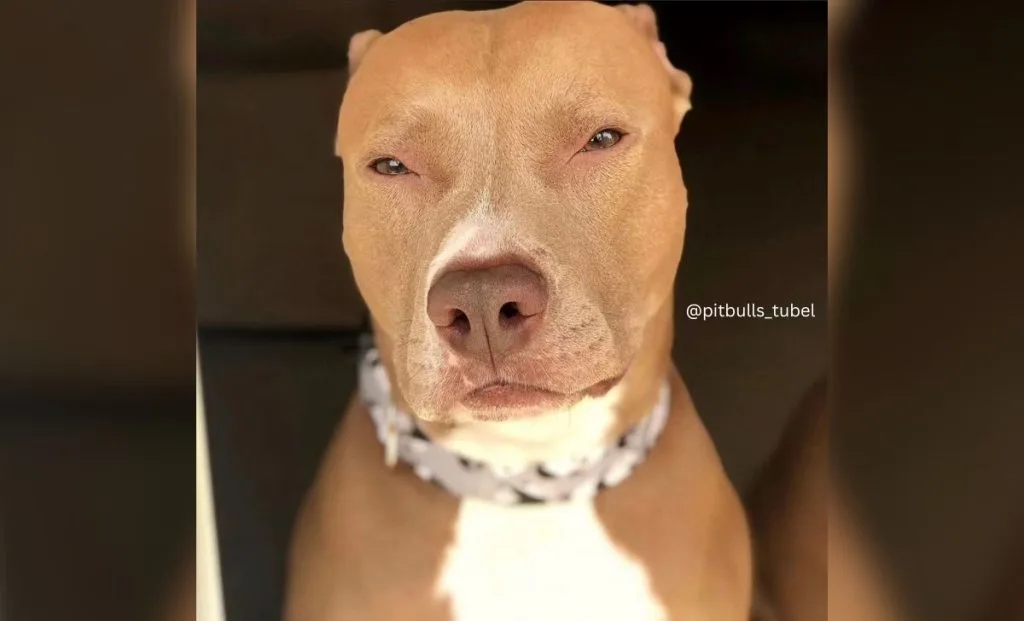
Fawn sable Pitbulls are black-nosed fawn Pitbulls with dark hair tips. They can have white markings, and most will have a black mask.
The combination of black tips and a fawn base coat gives these dogs a unique earthy color that is absolutely gorgeous.
23. Silver Fawn Pitbull
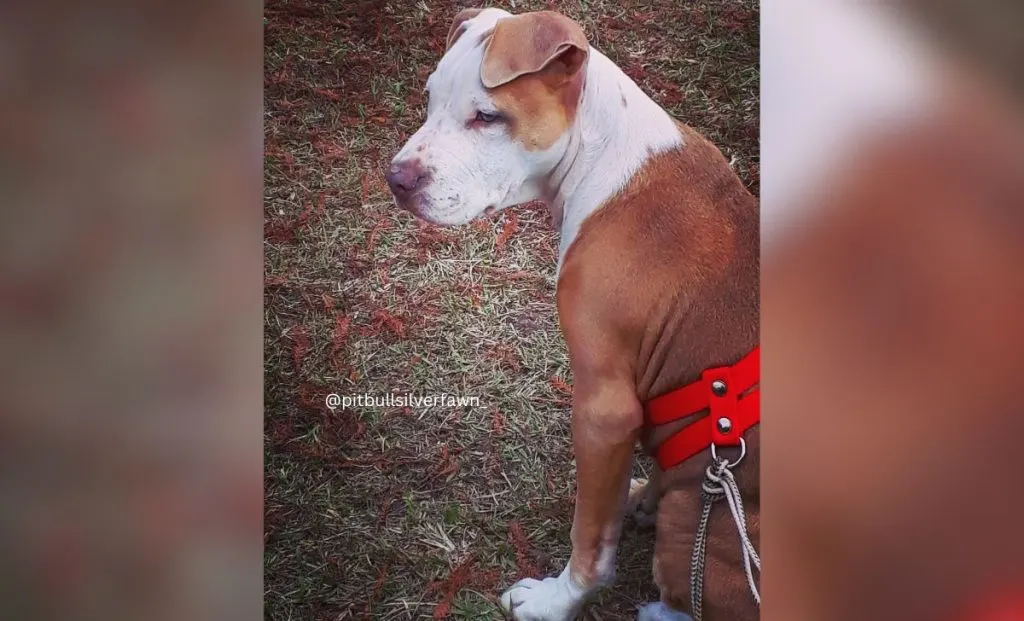
Just look at this amazing dog!
Also known as blue fawn Pitbulls, this is an extremely rare and prized Pitbull color.
These are fawn Pitties with a dilution gene that gives their coats a light, almost gentle silver shade.
They often come with white markings and have a blue nose, as well as hazel or blue eyes.
24. Reverse Brindle Pitbull

Unlike most colors and patterns I have mentioned so far, reverse brindle Pitbulls isn’t a single shade. Instead, this is a name given to all brindle dogs with a base coat that is lighter than the stripes.
For example, black brindle and blue fawn brindle dogs are reverse brindles.
This is a rare pattern in most breeds of dogs. However, Pitbulls are known for their brindle patterns, so it isn’t unusual to see them come in a reverse brindle, as well.
25. Buckskin Pitbull
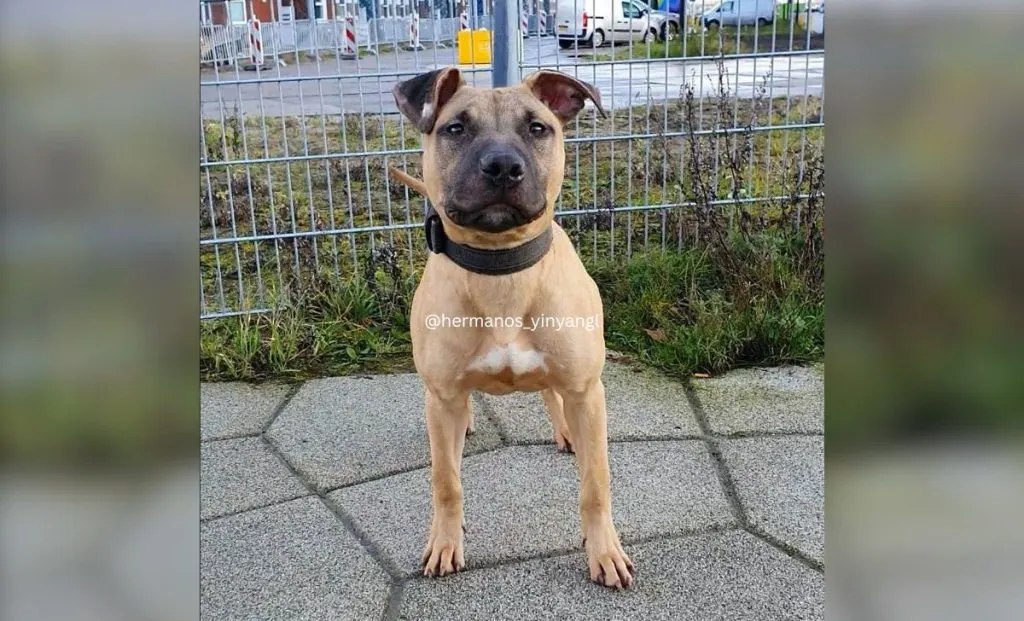
Buckskin Pitbulls are quite similar to fawn Pitbulls, but they come in a deeper golden shade.
Most of these dogs have a black mask and some white markings. Also, all of them have a black nose.
26. Tan Pitbull
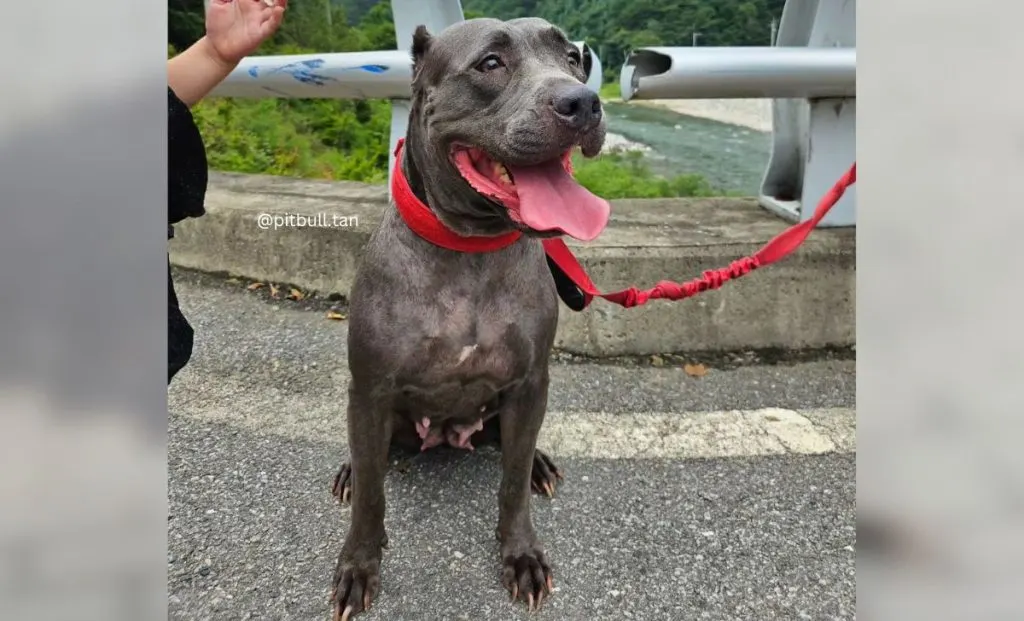
Tan Pitbulls are often confused with red or brown due to their dark beige coat color.
They often have white markings, but you can also find them in a single color.
Black markings on tan color are considered faulty by most kennel clubs, so keep that in mind.
27. Chocolate Pitbull
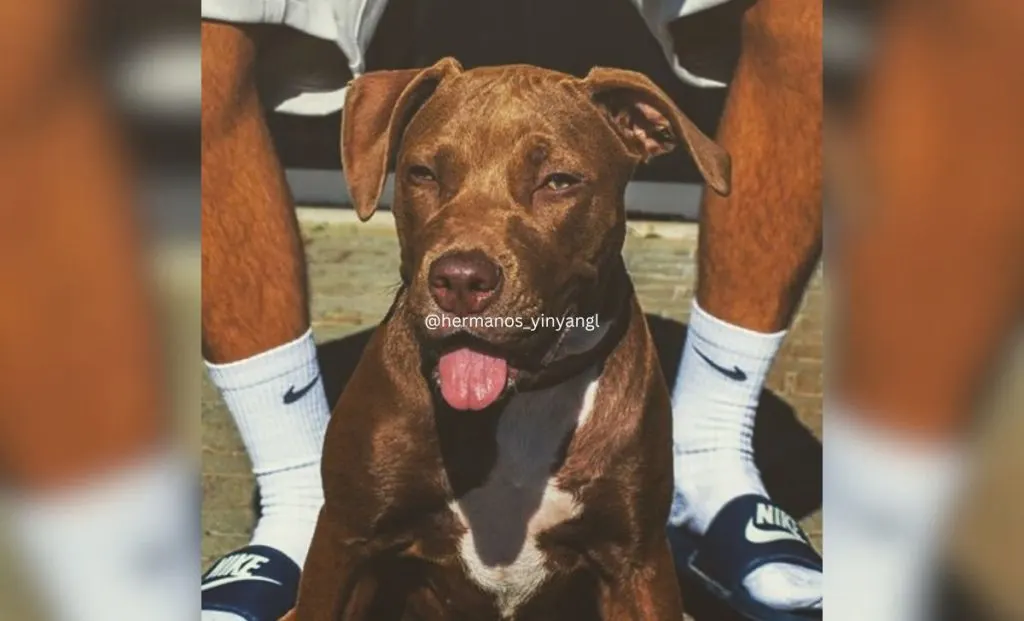
Chocolate Pitbulls are often confused with liver Pitties, but they are less red in shade.
They are a result of a recessive gene, which is why they are so rare.
Aren’t they so gorgeous you just want to eat them?!
28. Lilac Pitbull
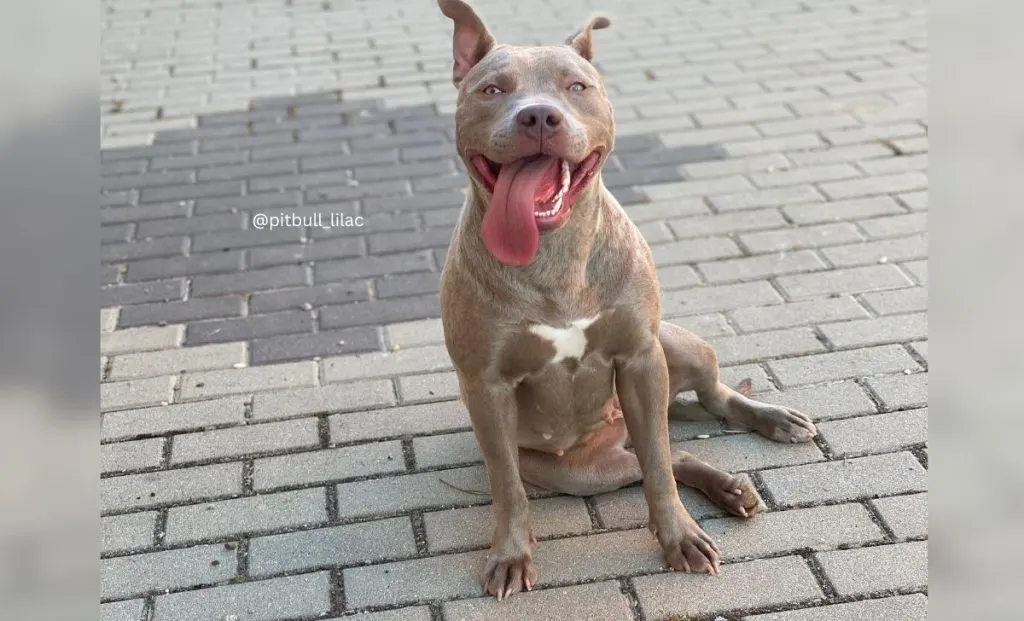
Lilac Pitbulls are some of the most beautiful dogs out there.
They are similar to silver fawn dogs but with pink features and a slightly purple tint.
This exotic color is the result of a rare genetic trait, so you won’t find it in most kennels – although it has become more popular in recent years.
29. Piebald Pitbull

Piebald is not a particular Pitbull color but rather a unique coat color distribution.
How to explain piebald? Well, if a dog looks like a Holstein cow, congratulations! It’s a piebald Pitbull.
Most piebald doggies have a color distribution between 20% and 60%. If a dog has more than half of his body in white color, it is considered a fault.
30. Seal Pitbull
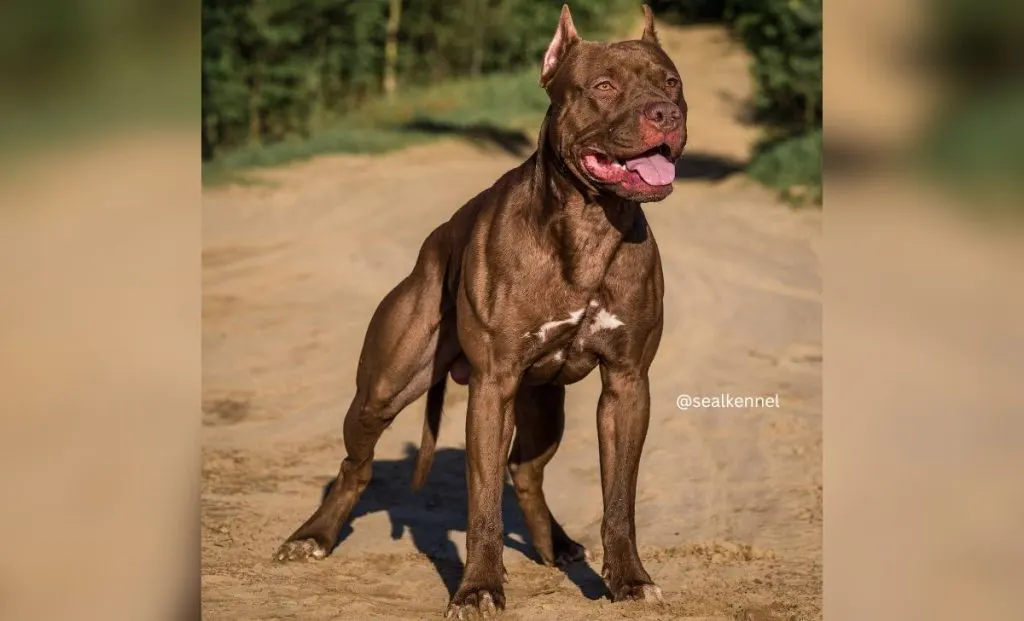
As you might’ve guessed, seal Pitbulls look just like – seals!
They have a rather unique shade that might appear black at first glance. Once you look at it closer, you’ll see that it has a red or brown shine to it.
This is a mysterious color, and experts cannot even agree on how it came to be. It is believed to be the product of a black color that isn’t evenly distributed on a dog’s body.
Whatever the cause, they are the cutest pups!
31. Spotted Pitbull
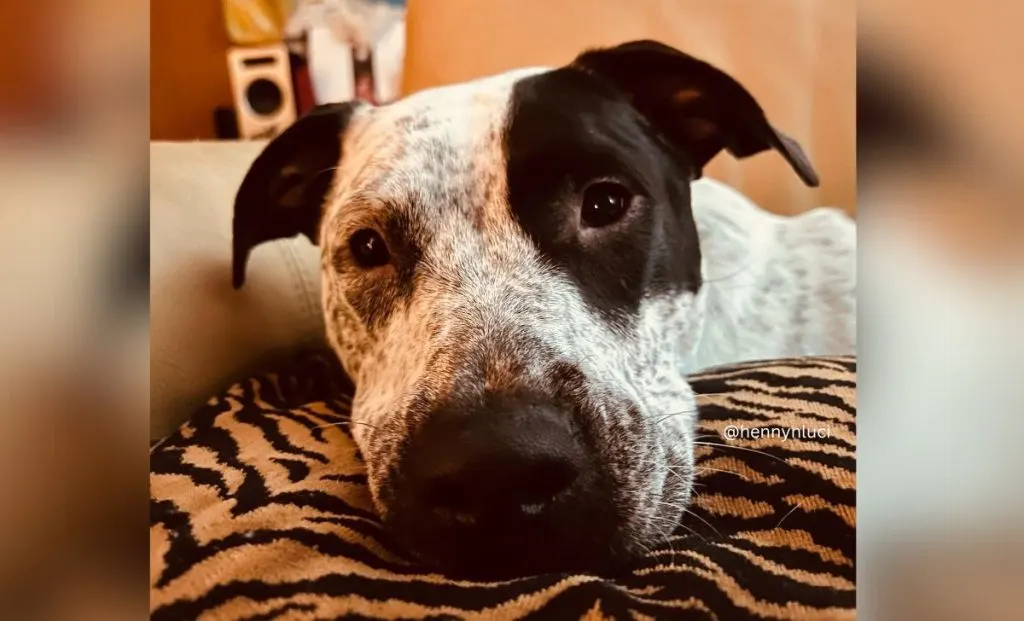
Spotted Pits are quite rare. They have a white base coat with speckles of color sprinkled on top of it. They don’t have to have regular spots like Dalmatians. As long as 70% of their body or more is white, they are considered spotted.
32. Tricolor Pitbull
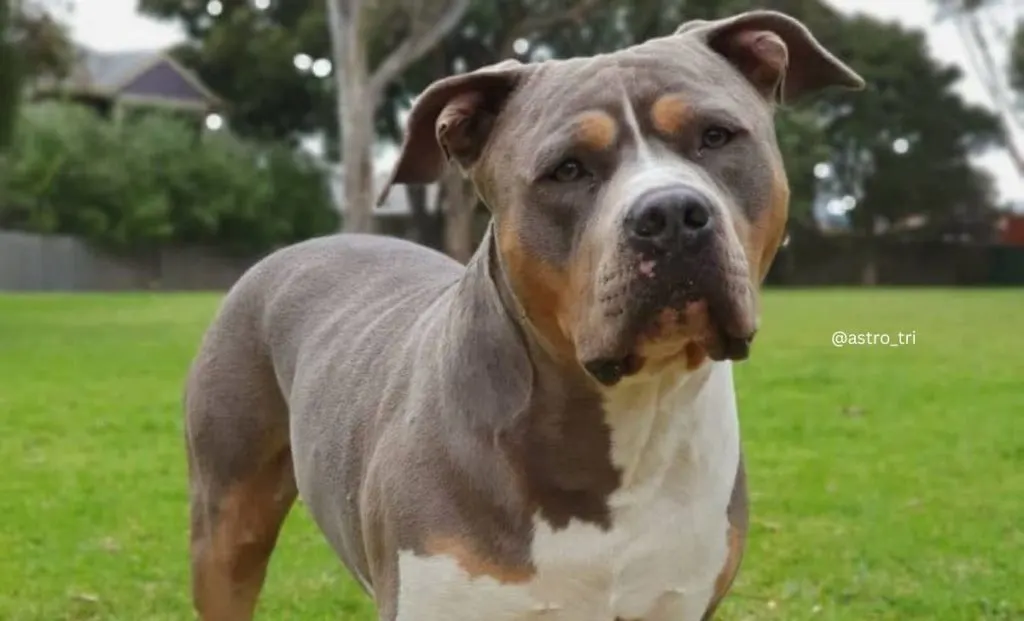
Tricolor Pitbulls are quite difficult to breed, as the color distribution is challenging to predict.
They can come in various vibrant colors and combinations, such as black and white and tan, blue and white and tan, or red and white and tan.
Many would consider merle dogs to be the same as tricolor Pitties, but entirely different genes cause the patterns.
33. Merle Pitbull
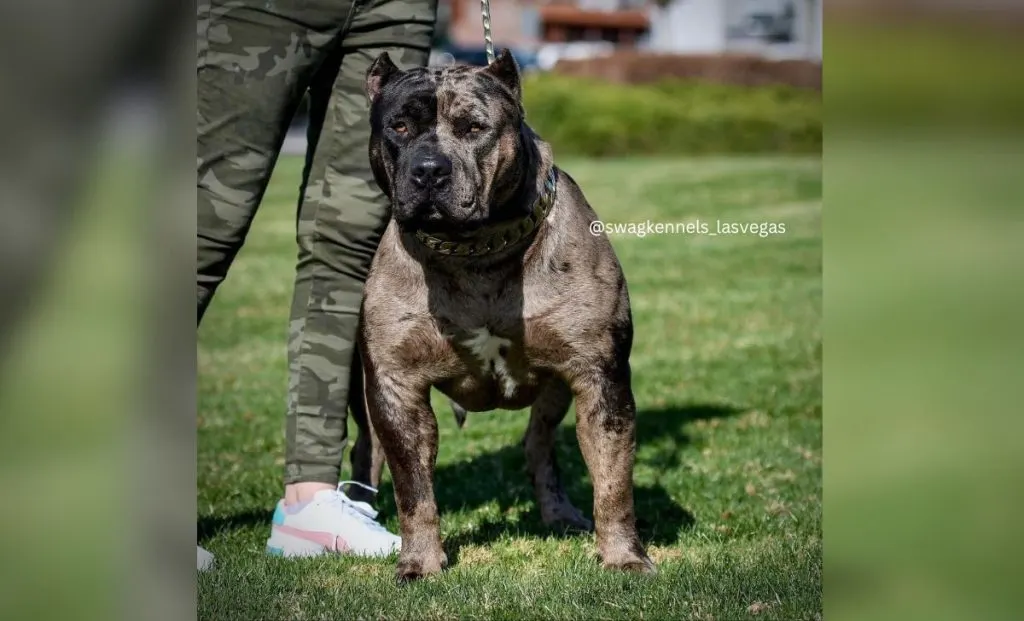
Out of all the different Pit Bull colors, merle is probably the most controversial one.
The partial dilution on a dog’s coat is caused by a specific merle gene, which is connected to many health conditions. This is why all kennel clubs consider the pattern faulty.
Fortunately, dogs with visible merle patterns aren’t known to be any more ill than any other Pitbulls. Their offspring, however, might be a whole different story.
Heterochromia, or odd-colored eyes, is also quite common in these pups.
34. White Pitbull
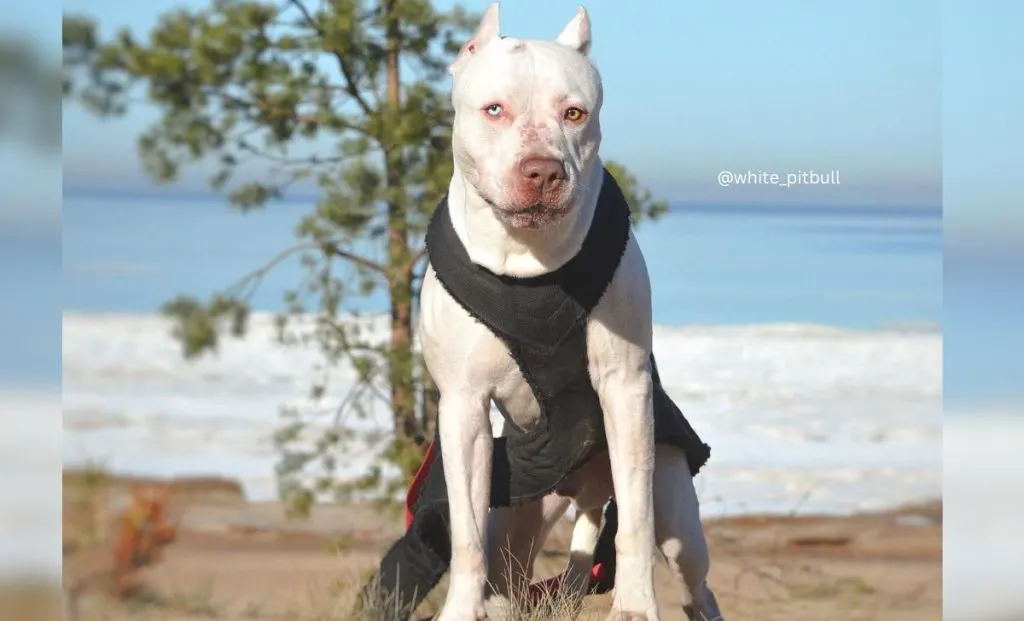
Some people consider white Pitbulls any Pitbulls that have a white base color – or, rather, that have a coat that is more than 50% white.
For others, a dog has to be in a solid white color to be called a white Pitbull.
In many cases, especially if the dog has blue eyes or heterochromia, the condition is caused by two merle genes. These dogs are known as double merles, and they are known to be prone to many health conditions, including blindness, deafness, and cardiac problems.
Unfortunately, many white Pitties have a shortened lifespan, which is why the intentional breeding of merle dogs is so frowned upon.
35. Albino Pitbull
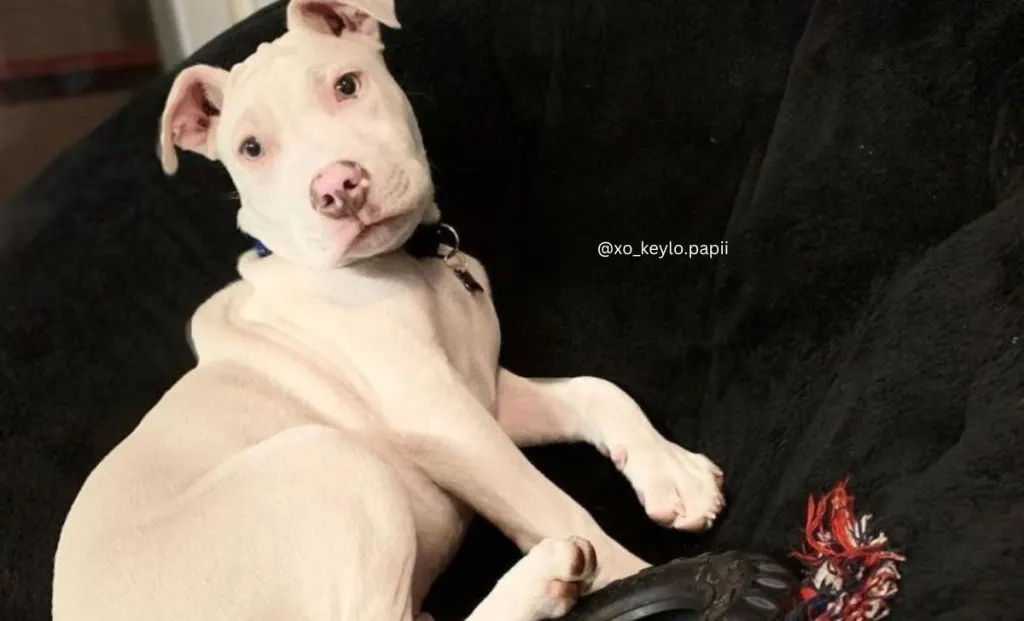
Albino Pitbulls are similar to white Pitbulls, but their white coat is caused by albinism, a condition that strips the dog of any pigment.
You can differentiate albino Pitbulls from a standard white Pitbull color by a pink hue on their skin and coat, as well as red eyes.
Albinism is pretty rare in Pitbulls, and these dogs are never intentionally bred.
What Is The Rarest Pitbull Color?
Despite Pitbulls being so colorful, a few colors are rarer than the others.
For example, black, black and tan, white, and chocolate are considered quite rare.
However, one color seems to be rarer than the others, and that is the lilac Pitbull. This beautiful color is one of the rarest shades in this breed – which is quite a shame, considering how gorgeous these pups are.
This is also one of the reasons why these pups are so expensive.
With so many Pitbull colors out there, aren’t these some of the most amazing dogs out there?
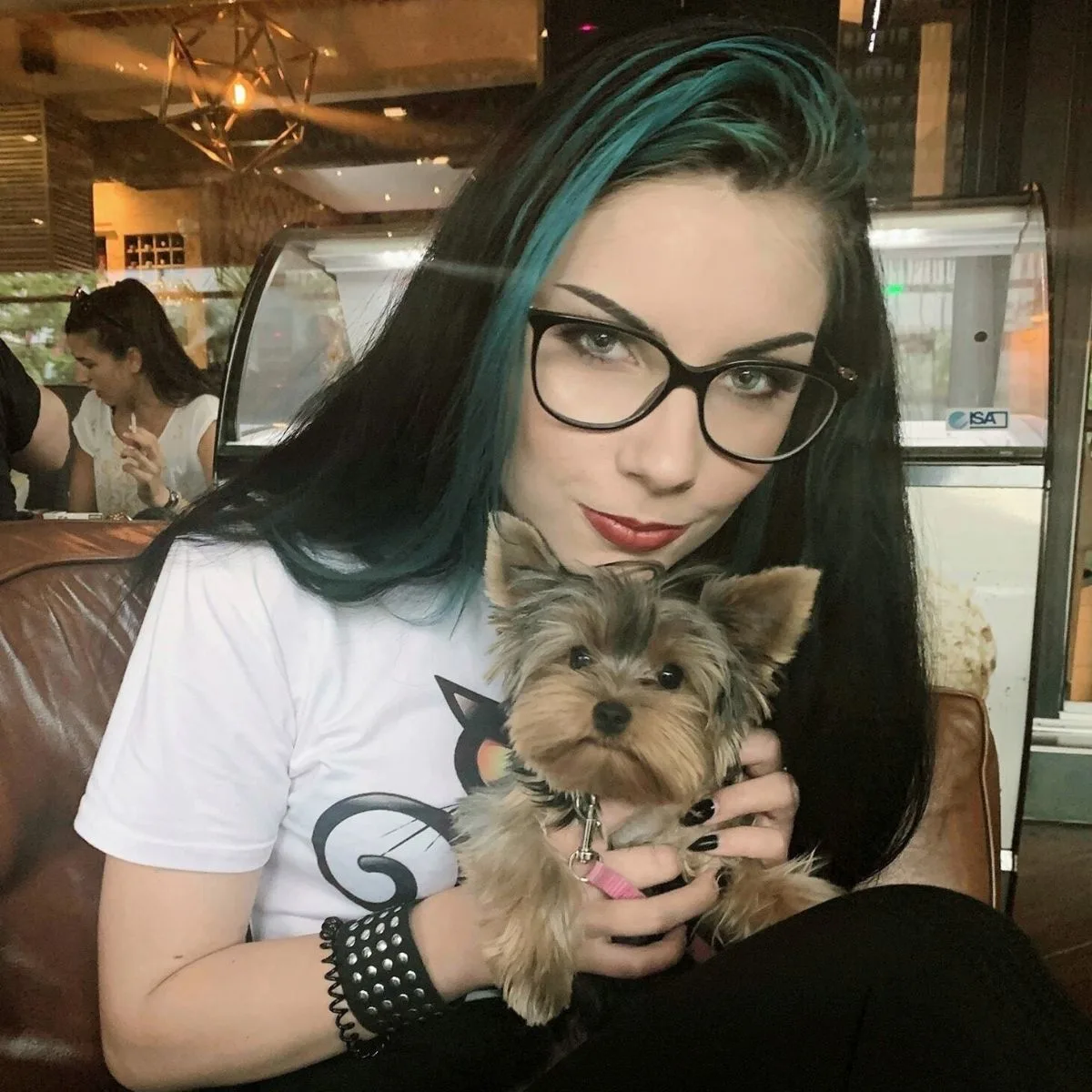
Vanja’s passion for writing started at an early age, which is why she pursued Journalism as her college degree. She can research any topic and find all the information before you bat an eye, which is a great thing for her job but a terrible one for her husband.
Even as a young child, she fell in love with everything fluffy – but dogs have a special place in her heart due to her childhood companion, a Corgie named Archie.
Motivated by her experiences and driven by a desire to give back to her four-legged companions, she spends her free time volunteering at a local dog shelter.
